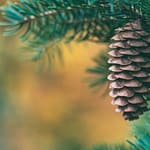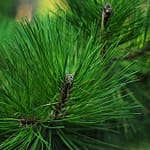The healing art of homeopathy has been around since 1796 and since that time generations of homeopathic physicians have created many homeopathic drugs. By using their method of dilution and succussion (shaking), they transformed many mineral, herbal and other medicines of the time into homeopathic drugs. Even household items such as sugar and salt became homeopathic remedies. The dilution/succussion protocol somehow releases the healing capacity of the substance and transforms even common items into energetic tools for treating both acute and chronic ailments.
During this holiday season when the Twelve Days of Christmas is frequently heard, I begin to think of homeopathic remedies I can link to the holidays. There are actually more than twelve that I can name so here goes.
There’s Hemlock Spruce (Abies canadensis) also known as Canadian Pine. It is a stomach, lung and heart remedy.
Another evergreen of note is Scotch Pine (Pinus sylvestris). It is useful in the treatment of joint pain, weak ankles, tardiness in beginning to walk, hives and bronchitis.
American Holly (Ilex aquifolium) is a remedy used for intermittent fever, eye symptoms and spleen pain.
Perhaps the most famous evergreen of the holiday season is Mistletoe (Viscum album). It treats many conditions among them low blood pressure, enlarged heart with heart valve problems, asthma, shortness of breath, joint pains and sciatica. Leg swelling, tremors, petit mal seizures and a sensation of a spider crawling over your hand and foot are also on the list of conditions treated by this holiday plant.
We can add two flowers to this holiday bouquet. One is the Reindeer Flower (Ranunculus glacialis) also known as the Glacier Buttercup because of the northern climate where it thrives. It is a seldom used cousin of the more commonly used flower, known simply as the Buttercup (Ranunculus bulbosis). Buttercup is a great shingles remedy and if used early on, seldom fails to cure.
The other flower will be appreciated by folks for whom Christmas is more than a secular holiday. It is known as the Star of Bethlehem. Because of it’s shape it calls to mind the nativity story of the three wise men following a star. Astronomers tell us that the star was really an alignment of the planets Jupiter and Saturn. This alignment happened recently in December of 2020 and the previous alignment was in the year 1226. The Star of Bethlehem (Ornithogalum umbellatum) is useful in treating various stomach and intestinal disorders including cancer.
Homeopathy utilizes a few other remedies with religious names such as St. John’s Wort (Hypericum perfoliatum), a great remedy for nerve injuries; St. Ignatia’s Bean (Ignatia), a wonderful remedy for grief; and St. Mary’s Thistle (Carduus marianus), a fantastic liver remedy.
Of course, the holiday season also means feasting on all our traditional foods and homeopathy doesn’t disappointment in this department. The following culinary items have all been transformed into homeopathic medicines: sage, nutmeg, vanilla, cloves, ginger and peppermint. Homeopathy is truly a healing method for all seasons and all conditions. One note of caution, however. Homeopaths don’t use any of the aforementioned plants in crude or raw form. They are all diluted to the point where they are not poisonous but healing. Happy Holidays!





